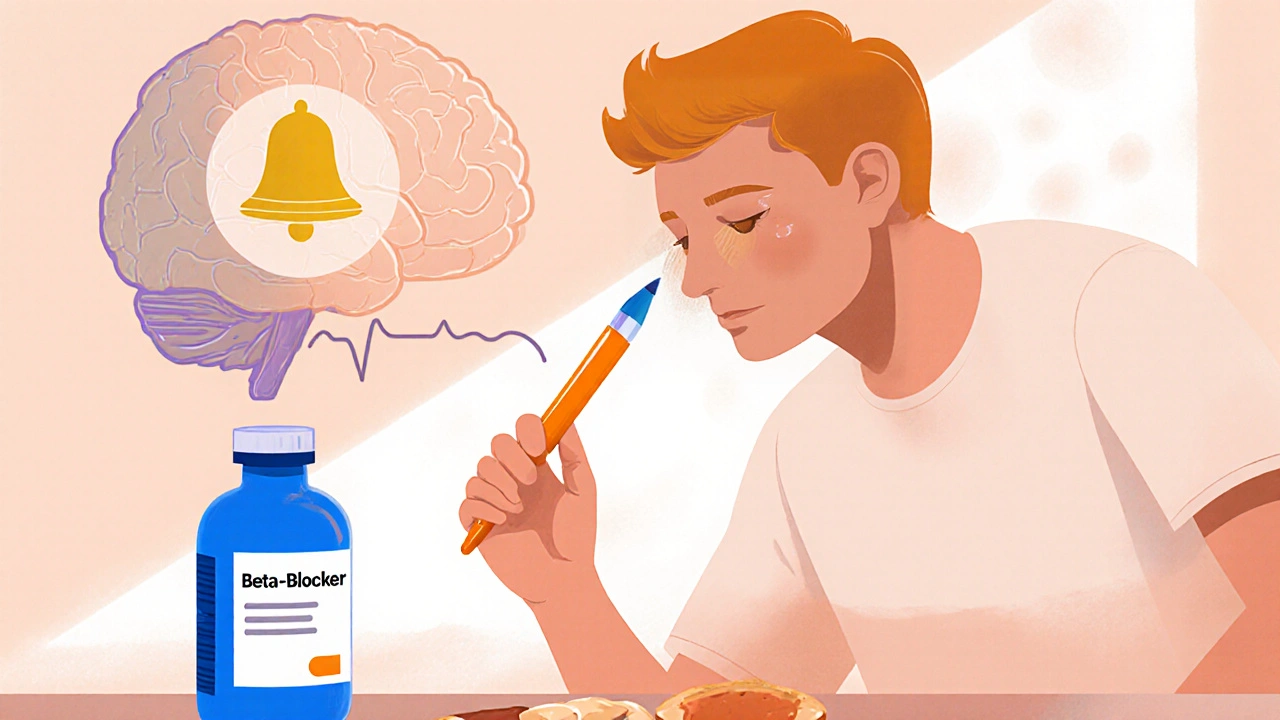Learn how insulin and beta‑blockers interact, why they hide hypoglycemia signs, and what steps keep you safe-guidelines, monitoring tips, and drug choices.
Hypoglycemia Unawareness: What It Is, Why It’s Dangerous, and How to Regain Awareness
When your blood sugar drops too low, your body usually sends warning signs—shaking, sweating, dizziness, hunger. But for some people, especially those with long-term diabetes, those signals vanish. This is hypoglycemia unawareness, a condition where the body no longer triggers the normal warning symptoms of low blood sugar. Also known as impaired hypoglycemia awareness, it turns a manageable drop in glucose into a silent emergency. You might feel fine one minute and pass out the next, with no warning. It’s not rare—studies show up to 40% of people with type 1 diabetes and many with advanced type 2 diabetes on insulin develop it over time.
What causes this? It’s often the result of repeated low blood sugar episodes. Every time your body drops below 70 mg/dL, your brain and adrenal glands get used to it. Over time, they stop releasing adrenaline and other stress hormones that normally trigger those telltale symptoms. The more often you have lows—whether from too much insulin, skipped meals, or intense exercise—the more your body forgets how to sound the alarm. It’s like turning down the volume on your body’s alarm system until it’s completely silent. And here’s the scary part: people with hypoglycemia unawareness are three times more likely to have a severe low that requires help from someone else.
But it’s not a life sentence. The good news? blood sugar awareness, the ability to recognize early signs of low glucose can often be restored. How? By avoiding lows for a few weeks. That means setting slightly higher target glucose ranges, checking blood sugar more often, and using continuous glucose monitors (CGMs) to catch drops before they hit critical levels. It’s not about perfection—it’s about giving your body a break so it can relearn how to react. Many people see improvement within 2 to 8 weeks of strict avoidance. And if you’re on insulin, working with your doctor to adjust doses or switch to a more forgiving insulin type can make a big difference.
Related to this is insulin therapy, the use of injected or pumped insulin to manage blood sugar in diabetes. While it’s life-saving, it’s also the main reason hypoglycemia unawareness develops. People who rely on insulin, especially those with tight control goals, are at highest risk. But awareness isn’t just about insulin—it’s about understanding your body’s patterns, recognizing subtle cues like mood swings or confusion, and having a plan. Even if you don’t feel the shake, you might notice you’re acting oddly, forgetting things, or feeling unusually tired. Those are your body’s last whispers before the silence.
You’re not alone in this. Many people with diabetes struggle with this silent danger, and the posts below cover real strategies people use to fight back: from adjusting medication to using tech like CGMs, from dietary tweaks to recognizing the hidden signs of a low. Whether you’re dealing with this yourself or helping someone who is, the information here is practical, tested, and focused on getting your body’s alarms back online.

